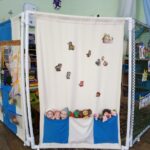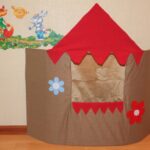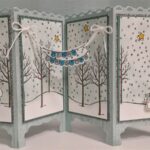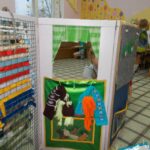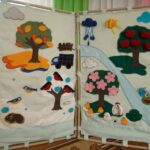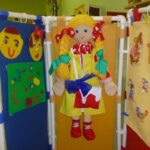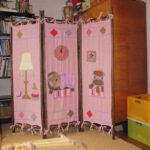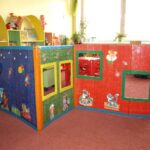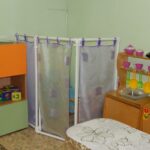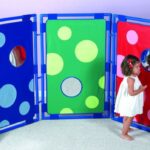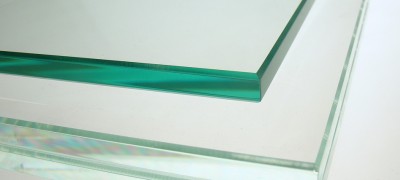Do-it-yourself kindergarten screen
Puppet theater is a special kind of art. It is always interesting for children to watch the acting out scenes. Also, the guys themselves can take part in puppet shows and then feel like real actors. After all, this is no longer playing with dolls, but a useful and creative activity.

However, a puppet show is impossible without a theater screen. We will find out how you can make a floor screen for a kindergarten with your own hands. How to use this structure correctly and what else can be used, since playing a puppet action with it is not all of the functions.

What is a multifunctional screen
Despite the prosaic name, such a structure is a very interesting interior item for a kindergarten. This is a kind of "transformer", a useful attribute, without which, sometimes, you cannot do without during the conduct of role-playing games in the kindergarten, showing puppet actions and more.

Goal and tasks
In a large-scale sense, the purpose of a multifunctional screen, designed accordingly, is to develop in preschoolers:
- cognitive abilities, interests and processes;
- intelligence as a whole - on the basis of practical actions using sensory standards.

The objectives of the manual are to provide indirect assistance in:
- the development of integrative qualities in children, outlook and all types of perception;
- the formation of elementary ideas about mathematics, a holistic picture of the world;
- improving eye-hand coordination.
Such a design will also serve as an excellent assistant for the development of fine motor skills of hands in babies.

Here are some examples. For example, on the screen canvas (if you attach the appropriate materials), the guys can:
- fasten buttons and buttons;
- learn lacing;
- fasten and unfasten the straps;
- weave pigtails;
- zip up and do many other tasks.
At the same time, the lower part of the structure (again, the panel) is convenient to use as a "guide" for acquaintance:
- with color and its spectra;
- letters;
- geometric shapes;
- account.

And also - for the development of abilities in mathematics, in general, in order to learn how to compose words, to form mathematical representations (determining the size - short-long, less-more, narrow-wide), etc.

Description of the manual
The structure consists of 3 parts: central and two side ones. The screen is double-sided. Learning tool with hidden entertaining elements allows you to solve important problems that contribute to the learning, development and education of preschool children.

The versatility of the screen allows you to keep the attention of young children for a long time (this is achieved by changing tasks and functions), as well as to avoid overload.

Types of screens
They can be table-top and floor-standing. The size of the fixture depends on the purpose. For preschoolers, the optimal construction height is 0.8 - 1.4 m. Ideal for table screens - a height of 15 to 40 cm.

You can make a screen from a variety of materials. One thing is important - their compliance with safety and hygiene requirements. Also, the material should not be heavy and toxic.

Suitable for manufacturing:
- plastic;
- polyethylene;
- artificial leather;
- polycarbonate;
- wood;
- rubber.
For fabric base:
- tulle;
- nylon;
- chintz;
- fleece.
However, the most mobile and lightweight screens are considered, in which the frames are made of ordinary propylene pipes used in plumbing.

The fabric of the structure, as a rule, is fastened by means of: Velcro, buttons, braid or buttons.
Various methods are also used to fasten the elements of the screen (Velcro, pockets, clothespins, buttons, hooks, elastic bands, ties).

Specifications
The construction is made from inexpensive materials and in execution it is quite simple. It turns out an adaptation:
- affordable;
- safe;
- transformable;
- content-rich;
- polyfunctional.

In addition, such a screen fully meets the requirements of the Federal State Educational Standard, in this case - for the construction of a spatial-objective environment that contributes to the active development of preschoolers.

How to make a screen for kindergarten
It is not difficult to make this device yourself for a kindergarten. It will take a little time and inexpensive materials.
What is the main task? It is important that the structure is stable and has high strength. The device will be in the center of children's attention all the time. Therefore, adults need confidence that the active use of the screen will withstand.

Among other things, sharp corners and heavy parts should be avoided as they can injure small children.
The design will become even more versatile if the fabric on the frame is fixed with Velcro. This will help you to design the screen differently every time, in different variations: change it as needed, depending on your needs.

Materials and tools
Before embarking on the task - a do-it-yourself theater screen for a kindergarten - you should stock up on the necessary tools.
As mentioned above, the simplest and most affordable material for making a frame is polypropylene pipes.They are inexpensive, while being distinguished by their durability and strength.

To connect the fragments of pipes, plastic fittings are used. The latter are fixed using a soldering iron specially designed for this kind of work. Soldering takes very little time (literally a few minutes), therefore this tool does not need to be purchased: it will certainly be found in the workshop of one of the children's parents.
What else will you need to work on the manufacture of a multifunctional screen? It:
- marker;
- roulette;
- fitting;
- scissors;
- fasteners;
- the cloth;
- saw for cutting pipes.
And, of course, the plastic pipes themselves (to do without cutting, they can be purchased in the store of the required length).

Manufacturing process
The work is carried out in several stages. First, you need to draw up a drawing of the screen with dimensions. Then the pipes are cut to the appropriate length.
Next, they are engaged in the manufacture of the frame. For this, a soldering iron is used: the ends of the base material, as well as the fittings, should be heated. Then - connect, slightly squeeze (a few seconds will be enough). And so that each part of the screen moves relative to each other, special plastic connecting elements are used. They should be put on the pipes, then fastened together with a soldering iron.

To sew the covers, pieces of the size suitable for the intended sections are cut out of the fabric (it is advisable to sew the edges). The fabric is fixed with special fasteners (buttons or Velcro).
Then you can start painting and decorating the structure. The plastic elements of the screen are painted. And an interesting decor can be provided by applications or cut-out figures and so on.
You can make an equally interesting attachment to the screen. To make it easier to organize performances and all kinds of exhibitions, it is advisable to attach fabric or transparent plastic pockets and put the necessary inventory there. And if the screen is used in a nursery group, such pockets can be made larger and larger pictures can be inserted.

Among other things, you can use stretched threads with clothespins or other fasteners, which will also greatly simplify the task. Until the product is used for its main purpose, the fabric covers can be replaced with a regular garden net. And already on it, with the help of decorative clothespins, attach children's drawings or photos, made on their own, small (for example, soft) toys, as well as various educational materials.
In a word, there are a lot of finishing options, as well as the assembly of the structure. In this case, everything depends on the creative thoughts and imaginations of children and educators. The process of making the screen itself can be turned into an entertaining and fun action, made a game in which every child can take a direct part. And in the future, with such a multifunctional adaptation, the embodiment of interesting and useful ideas into reality is available, which contributes to the effective development of children.

Variations in the use of the screen
In addition to the above functions, the screen can serve:
- a corner of solitude (full or partial), where children will be happy to relax;
- a tent where the guys can play (in this case, you can cover the structure with a cloth on top);
- a stand with educational and informative pictures placed in special transparent pockets.

With the help of such a device, you can divide the space for games according to interests, then the fun of some children will not distract others from quieter activities - sculpting, drawing, reading, etc.
The puppet theater contributes to the development of the creative abilities of children, helps to create optimal conditions for an interesting and rewarding pastime.
In kindergarten groups, there should be subjects, the focus of which can be called the realization of children's fantasies: this helps educators to teach more effectively.

The study of complex material is much easier when it is carried out in a playful, playful manner.
For these and other useful purposes, you can successfully use a multifunctional screen.

Video: portable floor screen for children




